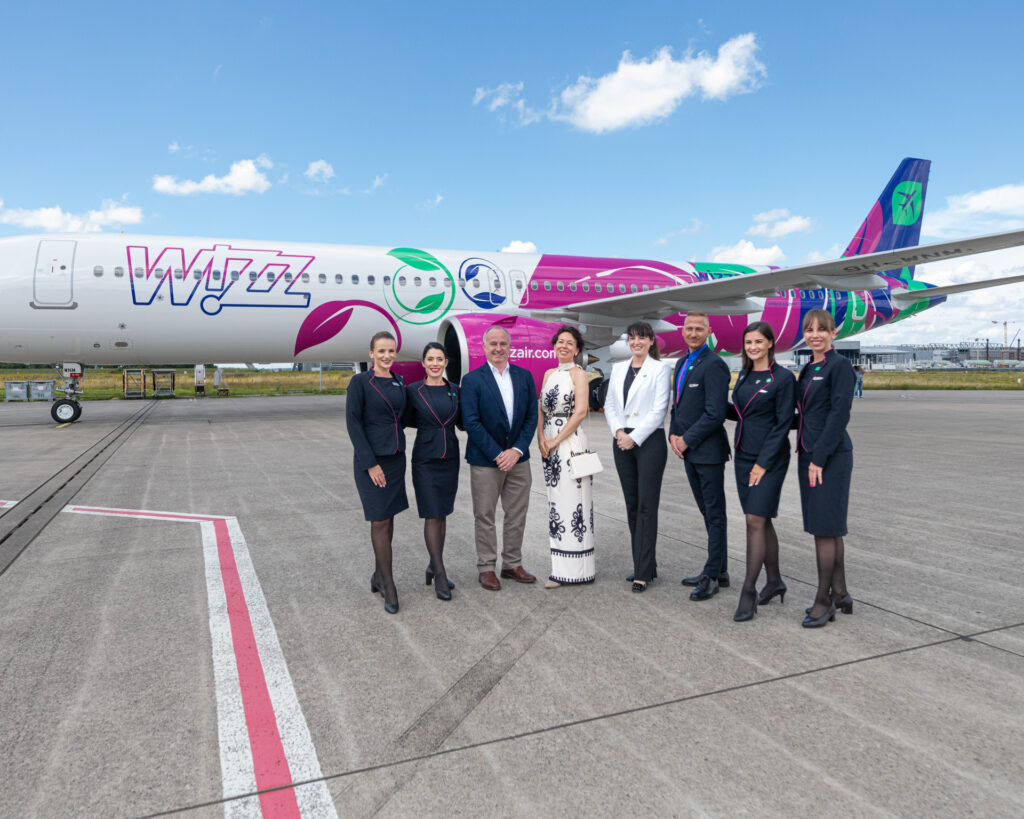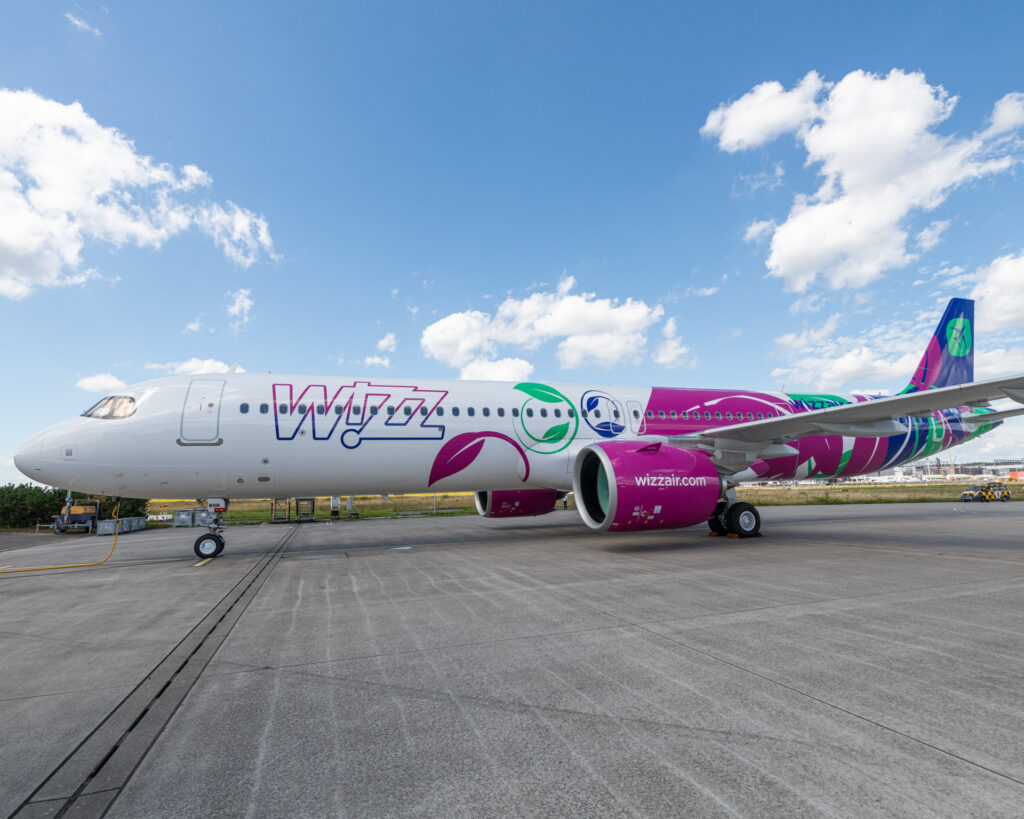Wizz Air reveals special 20th anniversary livery aircraft
The airline’s 132nd airbus A321neo joins its fleet in a specially designed livery

Wizz Air, the most environmentally sustainable airline globally, welcomed its 132nd Airbus A321neo aircraft in a special anniversary livery during a delivery ceremony at the Airbus factory in Hamburg. The new aircraft with tail number 9H-WNM will join the Wizz Air Malta fleet operating across nearly 200 destinations. The unique livery was designed by Éva Kerényi, the winner of the design competition Wizz Air ran last year, encouraging talent from across the world to create a livery for one of its Airbus A321neo aircraft.

The new livery is a vibrant testament to the airline’s commitment to sustainability while celebrating its iconic brand colours. The design features interwoven leaves wrapping the fuselage in the classic pink and blue WIZZ hues with invigorating pop of green, creating a dynamic pattern that embodies Wizz Air’s spirit. This integration of colour and imagery not only reinforces the airline’s brand identity but also highlights its environmentally conscious approach, making a bold statement in the skies.
The winner of the design competition, Éva Kerényi, commented: “I was inspired by the logo of Wizz Air, which features the airplane as the vein of the leaf. This is why I stuck with the main motif of the leaf; I thought of subtle fine lines with ever-growing leaves, and the signature Wizz Air’s colour scheme, pink and blue, coming together. I dreamed up a delicate, elegant motif, leaves and tendrils twining around the fuselage, which echoes my beloved contemporary style, Art Nouveau.”

Wizz Air marked its 20th anniversary this year, having experienced significant growth since its inaugural flight on May 19, 2004, flight between Katowice, Poland and London, UK. Boasting an extensive network of 800 routes spanning across nearly 200 destinations in Europe, Middle East, Central Asia and Africa, the airline has transported nearly 400 million passengers to date.
Speaking at the delivery ceremony Owain Jones, Wizz Air’s Chief Corporate Officer, commented: “Over the past 20 years, Wizz Air’s success has been underpinned by its exceptional fleet strategy. From day one, we have been operating state-of-the-art Airbus A320 Family aircraft. Deliveries of the Airbus A321neo started in 2019 and have fuelled Wizz Air’s growth, making it the fastest-growing airline in Europe and the industry leader in terms of capacity recovery post-pandemic, with the highest proportion of flights among major airlines flown on a new-technology platform. We are delighted to continue our fruitful lifelong partnership with Airbus, enabling us to reach the goal of 500 aircraft in our fleet by 2030.”
Key to Wizz Air’s long-term development and sustainability strategy is the renewal of its fleet with Airbus A321neos. This aircraft incorporates the latest technologies in aviation and offers significant environmental benefits, with a nearly 50% reduction in noise footprint, a 20% reduction in fuel consumption and 50% reduction in nitrogen oxide emissions compared to the previous model. The ultra-low-cost airline’s fleet is now comprised of 220 aircraft, over 60% of which is powered by the “neo” technology.
Yvonne Moynihan, Wizz Air’s Corporate and ESG Officer, noted: “We are beyond excited to welcome this unique symbol of our 20-year-old history and sustainability achievements to our fleet. In addition to continuously renewing our technology, we are implementing multiple initiatives that enhance our operational efficiency and investing heavily in sustainable aviation fuel. Our recent 5 million GBP investment into a prospective SAF producer Firefly is part of our mid-term strategy to further reduce CO2 emissions. By 2030, we aim to power 10% of our flights with sustainable aviation fuel. Yet the key to achieving net zero emissions is industry collaboration and strategic investments into low carbon technologies, supported by governments and policymakers with necessary legislation and meaningful incentives. We are focused on joining forces with all our partners in the aviation ecosystem on the road to net zero.”


